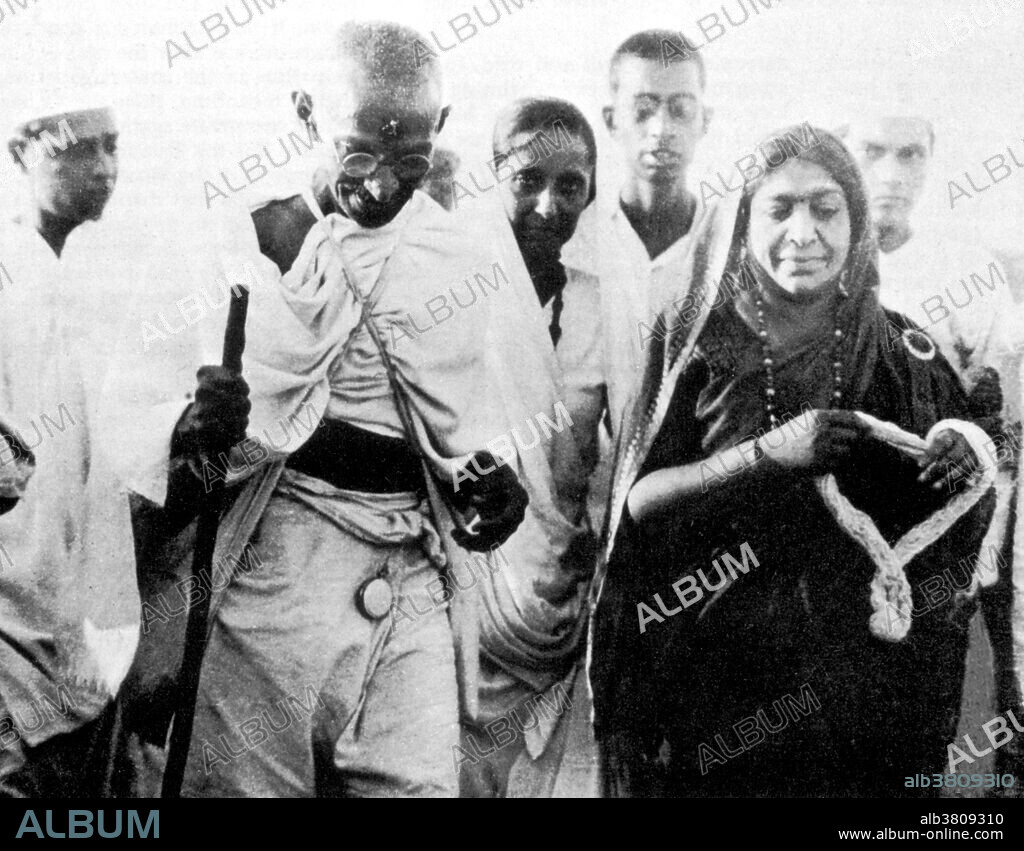alb3809310
Salt March, Mohandas and Kasturba Gandhi, 1930

|
Zu einem anderen Lightbox hinzufügen |
|
Zu einem anderen Lightbox hinzufügen |



Haben Sie bereits ein Konto? Anmelden
Sie haben kein Konto? Registrieren
Dieses Bild kaufen

Titel:
Salt March, Mohandas and Kasturba Gandhi, 1930
Untertitel:
Siehe automatische Übersetzung
The Salt March was initiated by Mohandas Gandhi to illegally produce salt from seawater. It began on March 12, 1930, and was a direct action campaign of tax resistance and nonviolent protest against the British salt monopoly in colonial India. Mohandas Karamchand Gandhi (October 2, 1869 - January 30, 1948) was the pre-eminent political and ideological leader of India during the Indian independence movement. Pioneering the use of non-violent resistance to tyranny through mass civil disobedience, a tool to fight for civil rights and freedom that he called satyagraha, he founded his doctrine of nonviolent protest to achieve political and social progress based upon ahimsa, or total nonviolence for which he is internationally renowned. He led nationwide campaigns for easing poverty, expanding women's rights, building religious and ethnic amity, ending untouchability, increasing economic self-reliance, but above all for achieving Swaraj, the independence of India from foreign domination. Gandhi was assassinated on January 30th, 1948, by Nathuram Godse, a Hindu nationalist who felt Gandhi was sympathetic to the Muslims. No photographer credited, 1930.
Bildnachweis:
Album / NYPL/Science Source
Freigaben (Releases):
Model: Nein - Eigentum: Nein
Rechtefragen?
Rechtefragen?
Bildgröße:
4200 x 3273 px | 39.3 MB
Druckgröße:
35.6 x 27.7 cm | 14.0 x 10.9 in (300 dpi)
Schlüsselwörter:
BERÜHMT • BERÜHMTE PERSÖNLICHKEIT • EHEFRAU • EHEMANN • GUJARATI • HERZ • INDIANER • INDISCH • MANN • NOTABEL • PERSON • PERSöNLICHKEITEN • PERSÖNLICHKEITEN • PROMINENZ • SALZMARSCH • VALENTINSTAG
 Pinterest
Pinterest Twitter
Twitter Facebook
Facebook Link kopieren
Link kopieren Email
Email
